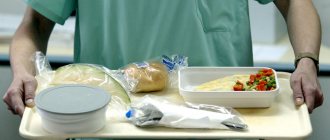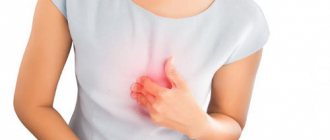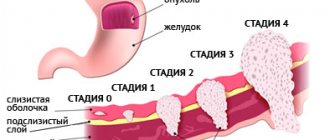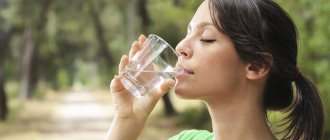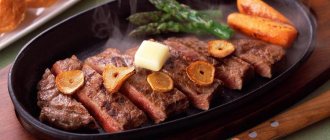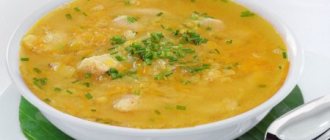Features of digestion in patients with a removed stomach
After a gastrectomy, the digestion process changes dramatically, so you need to carefully follow the recommendations of a nutritionist. It is important that the body still receives all the necessary nutrients.
After removal of the stomach, especially if the tumor has spread to the intestines, the patient may not feel hungry at all. Therefore, you should try to eat food while counting calories. Of course, losing weight in the first few months after surgery is normal, but the patient’s main task is to prevent a pathological decrease in body mass index. Even if there is no feeling of hunger, it is important to eat at least in order to have the strength to heal the operated areas.
Another feature of digestion is the deterioration of the absorption of certain vitamins: the lack of vitamin B12 is especially acute. The fact is that the stomach produces a protein that allows the intestines to absorb cobalamin. Therefore, patients who have had a total gastrectomy need to take B12 supplements or injections every few months.
Nutrition after gastric resection for cancer also needs to be organized taking into account the high risk of developing dumping syndrome. If swallowed food passes too quickly from the esophagus directly into the intestines, nausea, diarrhea, intense sweating and vomiting occur.
What happens to the digestive tract after surgery?
After the operation has been performed, the stomach is not able to digest food at full capacity, so if poorly processed foods enter it, they will be sent in the same form to the intestines, where it will not be able to absorb all the necessary nutrients from food.
This is why overload occurs in the gastrointestinal tract (GIT) and the patient begins to experience discomfort in the form of heaviness in the abdomen, flatulence and drowsiness. In addition, as a result of insufficient absorption of vitamins and other nutrients, the patient may experience vitamin deficiency, exhaustion and sudden weight loss.
To avoid unpleasant consequences, you must follow some rules to help cope with the digestion process:
- take food in small portions, but often (at least 5–7 times a day). The fact is that a reduced stomach will not be able to digest a large portion of food;
- It is necessary to chew food slowly, slowly, thoroughly;
- exclude from the diet foods containing large amounts of carbohydrates (sugar, baked goods, jam, etc.);
- increase the consumption of protein foods (lean meat, fish, eggs, cottage cheese);
- after the first and second courses, compote or something else should be drunk no earlier than 30 minutes after the last meal. This is necessary to unload the stomach.
If the stomach reacts with pain, nausea and vomiting to any food, you must temporarily stop eating the foods that caused the unpleasant symptoms.
These rules must be followed for at least 4 months after part of the stomach has been removed. The need is for the digestive system to fully adapt to new conditions. All food should be rubbed through a sieve; it is advisable to eat steamed foods.
Many patients are afraid to eat something for fear of pain, but this should not be allowed, as the body may become exhausted.
Basic diet rules
Nutrition after gastric resection for oncology must obey the strictest rules. After discharge home, it is recommended to switch to a “soft” diet of digestible foods.
You will have to eat smaller amounts of food, but more often: six to eight small portions per day. It is also recommended to remain upright for some time after finishing your meal. Since the stomach can no longer process food, it is important to eat small pieces and chew even soft foods thoroughly. You should also try not to allow more than 2-3 hours between meals. It's best to carry small snacks with you to fuel yourself anywhere.
In the first weeks after intranasal or parenteral nutrition is discontinued, the diet should consist only of liquid foods. Juices, fresh juices, and vegetable purees will provide the body with the necessary calories and nutrients, but at the same time will not irritate unhealed areas.
Nutritionist advice! In the first months after surgery, it is imperative to keep a log of the foods you eat and record the body’s reaction. Each organism is unique, therefore the diet after removal of the stomach is selected individually for each patient. By following this simple rule, a nutritionist will be able to identify food groups that cause flatulence, constipation or diarrhea.
Another important advice from a nutritionist: you need to stop drinking food. Drinking water at the same time as eating results in less room for food. Instead, it is better to drink several glasses of pure water between meals.
Habitual and familiar foods to which there was no previous allergy may provoke intolerance after surgery. It is worth giving the body time to get used to each new product in the diet.
General rules
Resection of the stomach or part of it in a number of cases is the only possible method of treating and saving the patient’s life. Stomach surgery is a radical method of treating extensive malignant neoplasms ( stomach cancer ), stomach ulcers , polyps, and gastric bleeding that are not amenable to conservative treatment. Despite the progress of medicine, gastric removal remains one of the most difficult surgical operations, and even if it is successful and there are no significant complications, rehabilitation takes a long period of time, and nutrition after gastric surgery is the most important component of this process.
Diet after gastrectomy or after removal of part of the stomach
Parenteral nutrition after gastrectomy begins with Diets No. 0A , 0B , 0B ( 1A , 1B , 1B surgical) prescribed sequentially. Their intended purpose is to provide the patient’s body with a minimum amount of basic food nutrients, unload and spare the stomach, and prevent intestinal bloating and flatulence . The diet contains easily digestible foods containing complete proteins, fats, carbohydrates, vitamins and macro/microelements and an increased amount of free fluid. Salt consumption is sharply limited.
On the first postoperative day, the patient is shown to be hungry; on day 2 - the diet includes 250 ml of warm sweet tea and rosehip infusion (50 ml), which are given after 15-20 minutes in a teaspoon; on days 4-5, in the absence of abdominal bloating and normal peristalsis, Diet No. 0A and 2 soft-boiled eggs are prescribed; on days 6-8 Diet No. 0B ; on days 9-11 - Diet No. 0B .
- Diet No. 0A . Contains 5-10 g of proteins, 15-20 g of fats and 180-200 g of carbohydrates. The volume of free liquid is 1.8-2.2 l, sodium chloride is no more than 1-2 g. The energy value of the daily diet varies between 760-1020 Kcal. Food is served in liquid form. Fractional diet - up to 7-8 times a day and the amount of food per meal is no more than 250 g. The diet includes mucous decoctions with cream, light low-fat meat broth, fruit and berry jelly/jelly, sweet rosehip decoction, fruit and berry juices . Dishes with a pureed and dense consistency, drinks containing carbon dioxide, and whole milk are completely prohibited.
- Diet No. 0B . Contains 40-50 g of protein, 50 g of fat and 250 g of carbohydrates. The volume of free liquid is up to 2 l/day, sodium chloride is no more than 4-5 g. The energy value of the daily diet is 1580-1650 Kcal. Food is prepared in liquid/puree form. Diet - up to 6 times a day, portion size should not exceed 400 g. In addition to the permitted products of Diet No. 0A , the diet is expanded by adding mucous cereal soups cooked in vegetable broth, soft-boiled eggs, liquid pureed rice and buckwheat porridges cereals, protein steamed omelettes, pureed dietary meat and fish, sweet berry jelly.
- Diet 0B . It is a diet of a transitional stage to subsequent physiologically complete nutrition. Contains 80-90 g of protein, 70 g of fat and 320 g of carbohydrates. The volume of free fluid is 1.5 l/day. Sodium chloride no more than 6-7 g. The energy value of the daily diet is 2100-2400 Kcal. Food is served in puree form. Diet: 5-6 times a day. The diet additionally includes cream/mashed soups, pureed steamed meat and fish, pureed cottage cheese with cream, fermented milk drinks, baked apples, pureed fruit/vegetable puree and 50-75 g of white crackers.
The duration of each surgical diet is 2-4 days, but, if necessary, the time spent on them can be lengthened or shortened. That is, approximately, after 9-12 days, the surgical diet after the operation ends, and the patient is transferred to the standard Diet No. 1 according to Pevzner (mashed version), which limits the amount of food consumed at one time: no more than 250 g of the first pureed dish or a glass of liquid (250 g), and for lunch - only two dishes. Meals are fractional, 5-6 times a day.
The diet contains an increased amount of protein (100-110 g), which includes dishes from boiled minced meat, boiled fish, fresh mashed/calcined cottage cheese, and egg white omelettes. The amount of fat in the diet is at the level of physiological norms or several times higher (80-90 g). If the patient does not tolerate fats well (and in their pure form too), which is manifested by bitterness in the mouth, regurgitation, diarrhea, their quantity is limited to 60-70 g. The carbohydrate content is reduced to 300-320 g due to easily digestible carbohydrates.
In some cases, in particular with dumping syndrome , manifested by dizziness , weakness, palpitations , chills, a feeling of heat, abdominal pain and bloating, diarrhea that appears after eating, it is necessary to completely eliminate foods containing sugar, since the consumption of easily digestible carbohydrates is one of the reasons for its appearance.
To slow down the evacuation of food from the gastric stump, it is recommended to consume viscous and jelly-like foods. You can practice separate meals of dense and liquid consistency, starting with dense ones, as well as eating in a lying position. Eat food in even small portions 6-7 times a day. After eating, you need to lie/recline in bed for 30-40 minutes. You can also practice eating butter before eating carbohydrate foods, which inhibits the removal of food from the gastric stump. If whole milk is poorly tolerated, it is excluded from the diet and replaced with other products.
Strong broths based on meat, mushrooms and fish, fatty red meat and fish, some types of birds (duck, goose) and products based on them (sausages, canned food, ham, smoked meats), fried foods, dough products are completely excluded from the diet. , fresh bread, savory snacks, salted fish and vegetables, solid animal fats, undiluted raw vegetables and fruits.
If the patient feels well, 3-4 months after the operation, he is gradually transferred to the unprocessed version of Diet No. 1 . The diet is physiologically complete, contains an increased amount of proteins and an almost normal amount of fats and complex carbohydrates. The restriction applies to simple carbohydrates in order to prevent the development of dumping syndrome. Culinary methods of processing products are preserved: the products are boiled or steamed, and after boiling, baked or stewed. In terms of the range of products, the diet of this diet option is more extensive, but the rules and restrictions are the same.
It is allowed to eat low-fat meat soups, borscht, cabbage soup (once a week), dried wheat bread, low-fat fish and beef, chicken dishes, and savory cookies. It is allowed to eat boiled and raw vegetables, garden herbs, fermented milk products, dishes based on buckwheat and rice, potatoes, mild low-fat cheese, dietary varieties of sausages, fresh fruits and berries.
In the absence of complications and satisfactory gastrointestinal function, 6 months after surgery, the patient can switch to a normal diet, but taking into account the diet and the characteristics of the chemical composition of the diet. It is possible to independently adjust the set of food products in the diet, taking into account individually intolerant foods. With a significant loss of body weight (by 10-15%) after gastrectomy, especially for cancer, the calorie content of the daily diet should be increased compared to the physiological norm by increasing the content of basic nutritional nutrients recommended for the diet.
peptic ulcer occur, a pureed version of Diet No. 1 , and in case of exacerbation - sequentially No. 1A and 1B with changes made to them taking into account intolerance to certain foods. In general, the nutrition of patients with diseases of the operated stomach must be individualized.
It is advisable to include specially developed dietary nutritional mixtures in the diet after gastric surgery - “ Nutrizon ”, “ Nutridrink ”, “ Berlamin Modular ”, which should be administered in small portions, possibly diluted with water, with constant assessment of their tolerability.
Dietary nutrition must necessarily include taking vitamin-mineral complex tablets, drugs that normalize the motor-evacuation function of various parts of the gastrointestinal tract and drugs containing enzymes to improve digestion processes ( Creon , Mezim-Forte ). Complete rehabilitation of patients is long-term and usually occurs by the end of the first year after surgery.
Permitted, fully or partially prohibited products
Nutrition after gastric surgery for oncology should be balanced. The basis of the diet should be protein-rich foods. It is protein that helps the body repair cells and tissues, and also helps the immune system recover after chemotherapy or radiotherapy.
Allowed protein sources:
- lean poultry;
- fish;
- eggs;
- yogurt, kefir.
Important! You need to be especially careful about consuming dairy products after surgery. The fact is that gastrectomy often provokes lactose intolerance. You should not immediately introduce milk, cream, ice cream, and cheeses into the menu. It is better to start with fermented milk products, and if there is no negative reaction, then you can move directly to milk.
Your diet should include whole grains: they provide the body with the right carbohydrates and fiber and help maintain energy levels. Optimal sources of whole grains:
- oat groats;
- brown rice;
- whole grain pastas.
You should also eat a variety of fruits and vegetables on a daily basis. Fruits and vegetables provide the body with antioxidants: the main defenders of healthy cells against cancer.
You can't give up healthy fat either. Fried, fatty and spicy foods should not be included in the diet. Instead, you should include in your diet:
- olives and olive oil;
- sesame, sesame oil;
- nut mixtures.
You should also limit the amount of sweets in your diet, especially processed sugar.
Therapeutic diets
After gastric surgery, the patient must eat according to a certain pattern. There are several types of diets that are prescribed to patients. Zero diets are also called surgical diets. They are prescribed in two cases: after operations on the digestive tract, in a semi-conscious state.
A zero diet is prescribed to provide nutrition in conditions where regular food intake is impossible, difficult or simply contraindicated. It allows you to relieve the gastrointestinal tract and prevent flatulence. The basis of the diet of diet No. 0 is mechanically and chemically gentle food: liquid, semi-liquid, jelly-like, pureed.
This therapeutic diet is divided into three main groups: 0A, 0B, 0B. All of them imply sufficient intake of fluids and vitamins, as well as proteins, fats and carbohydrates. At the same time, table salt is sharply limited. Next, we’ll talk in more detail about the three types of zero diet.
Diet No. 0A
This diet is prescribed on the fourth or even fifth day after gastrectomy. The essence of nutrition is to increase fluid intake and limit salt. Milk, sour cream, cream, carbonated drinks, as well as dense and pureed foods are prohibited. It is better to give preference to the following foods: low-fat meat broth, rice water, strained compote, jelly, rosehip infusion.
Therapeutic diet No. 0 is also called surgical diet
Diet No. 0B
It is prescribed approximately a week after the operation. It is already allowed to consume more liquids and table salt. The diet is similar to the above-mentioned menu, only the list of allowed products is slightly expanded, namely liquid pureed rice porridge, buckwheat and oatmeal, low-fat meat broth with semolina, berry mousse, soft-boiled egg.
Diet No. 0B
This diet serves to continue expanding the diet and transition to nutritious nutrition. At this stage, the following dishes are introduced into the menu:
- cream soup and cream soup;
- mashed cottage cheese;
- ground fruit and vegetable puree;
- milk porridge;
- baked apples;
- egg white omelet;
- wheat bread crackers;
- dairy products.
Sample nutrition menu after gastric resection
In fact, it is difficult to answer the question “how to eat after removal of the stomach,” because each patient’s body is unique. However, you can adhere to the general recommendations of nutritionists. In the first week after stopping nasal feeding, you are allowed to drink only clear liquids. It is possible to comply with such a rule, but it is difficult. If a feeling of hunger occurs, the patient can be “fed” through a tube.
It is very important to make sure that there is no sugar in the drink offered to the patient. The daily menu can be combined from the following dishes:
- vegetable or fish broth;
- green tea;
- dried fruits compote.
In the second week you can add more protein. Protein shakes are a great option. During the second week, a person may begin to feel psychologically hungry. The diet may consist of:
- protein powder diluted with still water without added sugar;
- broth with homemade noodles made from coarse whole grain flour;
- low-fat homemade yogurt without additives;
- pureed vegetable soups;
- oatmeal jelly;
- compote;
- applesauce.
In the third week after surgery, primary healing of the intestinal anastomosis is usually noted. The good news is that you can finally start adding solid foods to your diet, albeit pureed ones. Sugars are still prohibited at this stage. It is necessary to ensure that the patient receives at least 60 g of protein per day. You also need to eat very slowly. New products should be introduced according to the following scheme: one product every day.
Sample menu
The diet for gastrectomy (gastrectomy) is determined by the treating specialist. Despite this, every patient should know what diet he should follow. Sample menu for the first 3 days:
- First day:
- Breakfast:
- oatmeal with the addition of permitted fruits;
- weak tea.
- Lunch:
- curd soufflé;
- rosehip decoction.
- Dinner:
- cauliflower soup;
- turkey fillet cooked in a steamer;
- vegetable salad with vegetable oil;
- compote without sugar.
- Afternoon snack:
- biscuits;
- Herb tea.
- Dinner:
- boiled pike perch fillet;
- vegetable stew;
- a glass of kefir.
- Second day:
- Breakfast:
- soft-boiled eggs;
- diet bread with butter;
- weak coffee.
- Lunch:
- oat cookies;
- jelly.
- Dinner:
- vegetarian soup;
- rabbit stewed in sour cream;
- mashed potatoes;
- mineral water.
- Afternoon snack:
- cheesecakes with low-fat sour cream;
- green tea.
- Dinner:
- vegetable stew;
- chicken meatballs;
- a glass of acidophilus milk.
- The third day:
- Breakfast:
- buckwheat porridge with water;
- steamed veal cutlets;
- Herb tea.
- Lunch:
- fruit jelly;
- low-fat yogurt.
- Dinner:
- beetroot;
- zucchini boats;
- compote.
- Afternoon snack:
- carrot and beet salad dressed with vegetable oil;
- green tea.
- Dinner:
- steam omelette;
- salad from permitted vegetables;
- rosehip decoction.
If a patient wants to introduce a new product into the diet, it is imperative to consult with a specialized physician. In some patients, certain foods are well accepted by the body, while in others they cause a number of undesirable reactions, which is especially unsafe after gastric surgery.
Approximate daily menu in the third week after gastrectomy
Breakfast:
- 100 grams of low-fat yogurt;
- protein shake with almond or coconut milk.
2nd breakfast:
- oatmeal jelly with skim milk
Dinner:
- vegetable puree soup;
- steamed white fish fillet (grind in a blender before use);
- dried fruits compote.
Afternoon snack:
- grated low-fat cottage cheese.
Dinner:
- steamed omelette.
Mashed bananas are also suitable as snacks.
Other products that can be included in the diet menu after gastric resection for oncology:
- rye cereals soaked in skim milk or kefir;
- vegetables, steamed or boiled until soft;
- soft varieties of low-fat cheeses;
- canned tuna and salmon in its own juice.
In the third week, sugar is still prohibited, as well as starchy foods (white flour pasta, rice and bread). Do not eat fibrous vegetables such as celery, broccoli, asparagus, lettuce, and greens.
Authorized Products
The diet after gastric removal includes:
- Slimy soups made from buckwheat, rice, oatmeal with the addition of an egg-milk mixture, butter, low-fat cream to the finished dish.
- Low-fat varieties of red meat (veal/beef), rabbit, chicken/turkey, well boiled and minced through a meat grinder.
- White fish (pike, cod, hake, pollock), steamed/boiled.
- Cereal dishes in the form of liquid porridge from rice, buckwheat, oatmeal, with the addition of butter.
- Chicken eggs in the form of a steam omelet/soft-boiled
- Boiled/stewed well-chopped vegetables (potatoes, carrots, beets, cauliflower, zucchini, pumpkin).
- Milk and dishes based on it, low-fat cream, calcined cottage cheese, butter/vegetable oil.
- Juices from fresh berries, rosehip infusion, milk jelly, weak tea with cream.
Table of permitted products
| Proteins, g | Fats, g | Carbohydrates, g | Calories, kcal | |
Vegetables and greens | ||||
| zucchini | 0,6 | 0,3 | 4,6 | 24 |
| potato | 2,0 | 0,4 | 18,1 | 80 |
| carrot | 1,3 | 0,1 | 6,9 | 32 |
| beet | 1,5 | 0,1 | 8,8 | 40 |
| pumpkin | 1,3 | 0,3 | 7,7 | 28 |
Cereals and porridges | ||||
| buckwheat (kernel) | 12,6 | 3,3 | 62,1 | 313 |
| cereals | 11,9 | 7,2 | 69,3 | 366 |
| white rice | 6,7 | 0,7 | 78,9 | 344 |
Bakery products | ||||
| white bread crackers | 11,2 | 1,4 | 72,2 | 331 |
Confectionery | ||||
| jelly | 2,7 | 0,0 | 17,9 | 79 |
| marshmallows | 0,8 | 0,0 | 78,5 | 304 |
| paste | 0,5 | 0,0 | 80,8 | 310 |
Raw materials and seasonings | ||||
| sugar | 0,0 | 0,0 | 99,7 | 398 |
Dairy | ||||
| milk | 3,2 | 3,6 | 4,8 | 64 |
| cream | 2,8 | 20,0 | 3,7 | 205 |
Cheeses and cottage cheese | ||||
| cottage cheese | 17,2 | 5,0 | 1,8 | 121 |
Meat products | ||||
| boiled beef | 25,8 | 16,8 | 0,0 | 254 |
| boiled veal | 30,7 | 0,9 | 0,0 | 131 |
| rabbit | 21,0 | 8,0 | 0,0 | 156 |
Bird | ||||
| boiled chicken | 25,2 | 7,4 | 0,0 | 170 |
| turkey | 19,2 | 0,7 | 0,0 | 84 |
Eggs | ||||
| chicken eggs | 12,7 | 10,9 | 0,7 | 157 |
Oils and fats | ||||
| butter | 0,5 | 82,5 | 0,8 | 748 |
| ghee | 0,2 | 99,0 | 0,0 | 892 |
Non-alcoholic drinks | ||||
| mineral water | 0,0 | 0,0 | 0,0 | — |
| black tea with milk and sugar | 0,7 | 0,8 | 8,2 | 43 |
Juices and compotes | ||||
| juice | 0,3 | 0,1 | 9,2 | 40 |
| jelly | 0,2 | 0,0 | 16,7 | 68 |
| rose hip juice | 0,1 | 0,0 | 17,6 | 70 |
| * data is per 100 g of product | ||||
A sample menu that you will have to stick to for the rest of your life
If everything is fine, and the nutritionist and gastroenterologist have no comments, then the patient is usually discharged in the fourth week. The patient gradually switches to good nutrition (a diet that will have to be followed for the rest of his life). It must be remembered that the digestive system is still extremely unstable, so you need to eat slowly and remember to chew thoroughly.
The list of permitted products is quite extensive:
- red fish;
- steamed veal;
- bird;
- fruits;
- vegetables;
- grain products.
Coffee fans can start drinking chicory. If the body does not react negatively to the new drink, then after a few weeks it will be possible to introduce decaffeinated coffee into the diet (possibly with the addition of skim milk).
The following products are strictly prohibited:
- soda;
- any fried food;
- processed sugars;
- high-carbohydrate foods with low nutrient content (pizza, rolls, potatoes in large quantities).
Of course, you should not drink alcohol or eat snacks (crackers, chips, candy bars, etc.). Ignoring simple nutritional rules can lead to the development of ulcers of the esophagus and intestines.
Features of postoperative nutrition
Immediately after surgery to remove part of the stomach, the patient is examined by the attending oncologist (in the vast majority of cases, surgery of this type is prescribed for stomach tumors or metastases). Based on the data obtained from the anamnesis, examination, existing diseases (especially the gastrointestinal tract) and the patient’s personal preferences, an individual menu is drawn up for him, which takes into account not only the course of the disease, but also the person’s personal preferences in food. It is important to understand that by removing the stomach, the esophagus is directly connected to the small intestine, which can create many postoperative complications. Therefore, to prevent undesirable situations, it is extremely important to ensure proper nutrition after longitudinal gastrectomy.
The first thing the doctor pays attention to is the daily calorie intake. To do this, it is necessary to take into account the exact weight and height of the patient. As a rule, the average is no more than 2900 calories per day. In addition, an important aspect of recovery is maintaining a fractional intake of food - 5-6 times in small portions. The food consumed must correspond to the required temperature conditions - room temperature (neither cold nor hot). Eating several different dishes at the same time is also prohibited.
A person after a gastrectomy needs to give up foods high in carbohydrates, as they negatively affect digestion, complicating these processes and creating additional stress. In addition, the selected recipes should contain a minimum amount of salt and spices, which have an irritating effect on the mucous membrane. Salty foods can also contribute to the reflux of swallowed food into the esophagus, which is strictly prohibited during the recovery period. It is equally important to follow the rules for the size and consistency of incoming food. It should be small (the first days exclusively in the form of a puree) and soft, ensuring easy chewing and swallowing.
Healthy snack options
Since nutritionists recommend that patients add 2-3 snacks in addition to three main meals, always have a tasty healthy snack on hand that does not require heating. Naturally, each dish should be added to the menu only after approval by a nutritionist.
Great snack ideas:
- hummus with grated boiled carrots and turmeric;
- hard-boiled egg;
- banana.
As you can understand, living without a stomach and eating tasty and varied food is quite possible.
